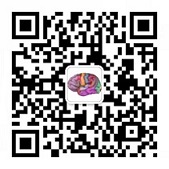Self-limited Familial Neonatal Epilepsy
Etiologies: Mostly inherited in autosomal dominant mode (sometimes with incomplete penetrance), certain genetic mutations, such as KCNQ2 (the most common), KCNQ3, and SCN2A, are associated with this disease [1-3]. Note that mutations in the above genes can also cause severe epileptic encephalopathy, which is related to the difference in mutation sites and other factors.
Age of onset: Onset within 7 days after birth (commonly on the second or third day after birth), basic remission within 6 months (most remission within 6 weeks).
Seizure characteristics: The early stage of the seizures can be characterized by tonic features, followed by other autonomic features (apnea, cyanosis, heart rate change, etc.), motor symptoms (bilateral or local clonic, which can swim from one side to the other) and automatisms (sucking, chewing, etc.), which generally lasts for 1-3 minutes at a time, often recurring within a week, and a small number of single seizure in the future [4].
EEG: Background: basically normal. Interictal: It can be normal, some of them can have focal or multifocal sharp waves, and can also be shown a theta pointu alternant pattern (seen in half of cases), which are often seen in quiet sleep, and the bilateral hemispheres are often out of sync. Ictal: Initially, it can be manifested as extensive inhibition of background activity, followed by the rhythm of spikes of various frequencies and waveforms, or a single rhythm of delta, theta and alpha frequencies, most often in rolandic area. With the progress of the seizures, partial discharges can diffuse or swim to other parts or even the contralateral hemisphere, lasting from 1 to 3 minutes, sometimes only subclinical ictal discharges [4].
Brain MRI: Mostly normal.
Developmental progress: Basically normal.
References
- Singh, N.A., et al., A novel potassium channel gene, KCNQ2, is mutated in an inherited epilepsy of newborns.Nat Genet, 1998. 18(1): p. 25-9.
- Charlier, C., et al., A pore mutation in a novel KQT-like potassium channel gene in an idiopathic epilepsy family.Nat Genet, 1998. 18(1): p. 53-5.
- Berkovic, S.F., et al., Benign familial neonatal-infantile seizures: characterization of a new sodium channelopathy.Ann Neurol, 2004. 55(4): p. 550-7.
-
刘晓燕. 临床脑电图学. 第2版. 北京 : 人民卫生出版社, 2017.

 English
English  简体中文
简体中文 